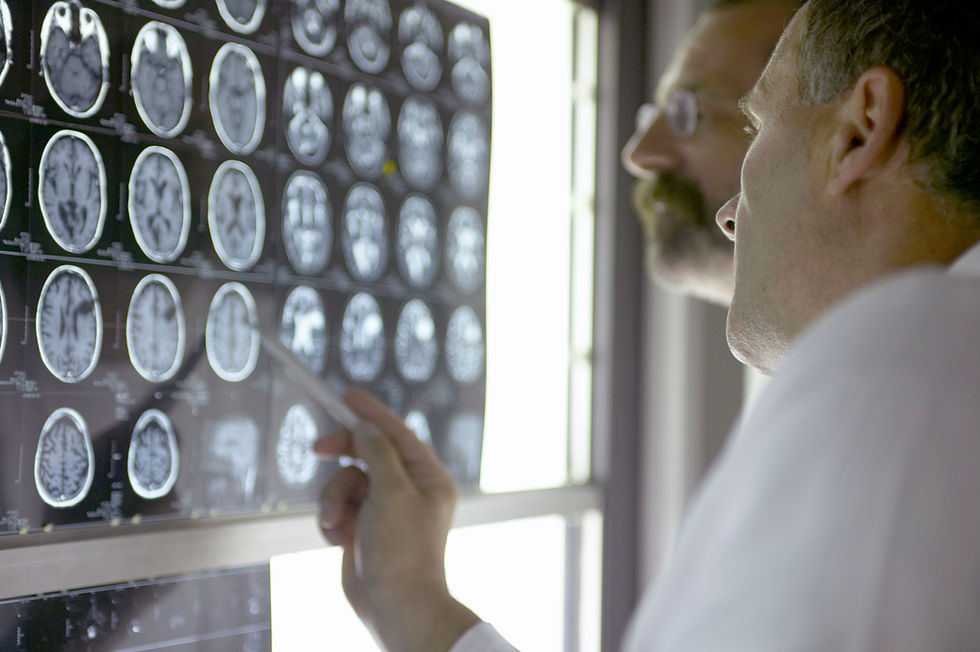Posture Perfect: How to Improve Posture and Reduce Pain
- AJ Kirkpatrick, PT, DPT

- Mar 13, 2024
- 3 min read
In our modern world of prolonged sitting, hunching over screens, and constant motion, maintaining good posture often takes a backseat. However, the significance of proper posture for spinal health and pain management cannot be overstated. Poor posture not only affects our physical appearance but also contributes to a myriad of musculoskeletal issues, leading to discomfort, pain, and even long-term spinal complications.
The Impact of Poor Posture on Spinal Health
Our spine serves as the central support structure of our body, providing stability, flexibility, and protection for the spinal cord. When we slouch or adopt improper postures for extended periods, we subject our spine to unnecessary stress and strain. Over time, this can lead to:
Muscle Imbalances: Poor posture can cause certain muscles to become tight and overactive while others weaken and become inactive. This imbalance can pull the spine out of alignment, leading to chronic pain and discomfort.
Spinal Misalignment: Consistent slouching or slumping can lead to misalignment of the vertebrae, disrupting the natural curvature of the spine. This misalignment can compress nerves, leading to pain, tingling, and numbness in the affected areas.
Reduced Lung Capacity: Slouching posture can compress the chest cavity, restricting lung expansion and reducing respiratory efficiency. This not only affects oxygen intake but also contributes to feelings of fatigue and sluggishness.
Practical Tips for Correcting Poor Posture
Improving posture requires a combination of awareness, education, and consistent effort. Here are some practical tips to help you correct poor posture habits and maintain a healthy spinal alignment:
Mindful Awareness: Start by paying attention to your posture throughout the day. Notice how you sit, stand, and move, and identify any habitual postural tendencies.
Sit and Stand Tall: When sitting or standing, imagine a string pulling you upward from the top of your head, elongating your spine and aligning your shoulders over your hips.
Supportive Seating: Use ergonomic chairs with lumbar support to maintain the natural curve of your lower back while sitting. Sit all the way back in your chair with your feet flat on the floor.
Take Breaks: Avoid prolonged periods of sitting or standing in one position. Take frequent breaks to stretch, walk around, and change your posture throughout the day.
Strengthen Core Muscles: Strengthening the muscles of the abdomen, back, and pelvis can help support proper posture. Incorporate exercises such as planks, bridges, and bird-dogs into your routine.
Stretch Tight Muscles: Stretch tight muscles that may be contributing to poor posture, such as the chest, hip flexors, and hamstrings. Hold each stretch for 20-30 seconds and repeat several times a day.
Exercises for Better Posture
Here are a few simple exercises to help improve posture and strengthen the muscles that support spinal alignment:
Thoracic Extension: Sit tall on a chair with your hands behind your head. Gently arch your upper back, looking upward, and hold for 5-10 seconds. Repeat 10 times.
Wall Angels: Stand with your back against a wall, feet shoulder-width apart. Slowly slide your arms up the wall, keeping your elbows and wrists in contact with the wall. Hold for a few seconds, then lower your arms. Repeat 10 times.
Cat-Cow Stretch: Start on your hands and knees, with your wrists directly under your shoulders and your knees under your hips. Inhale as you arch your back and lift your chest towards the ceiling (cow pose), then exhale as you round your spine and tuck your chin to your chest (cat pose). Repeat 10 times.
By incorporating these tips and exercises into your daily routine, you can gradually improve your posture, reduce pain, and support long-term spinal health. Remember that consistency is key, so stay mindful of your posture and make adjustments as needed throughout the day. Your spine will thank you for it!
If you're near the Mission Viejo area and think you, or someone you know, might benefit from physical therapy, or to get any questions answered, please don’t hesitate to reach out for a free consultation! (just mention this blog)




Comments